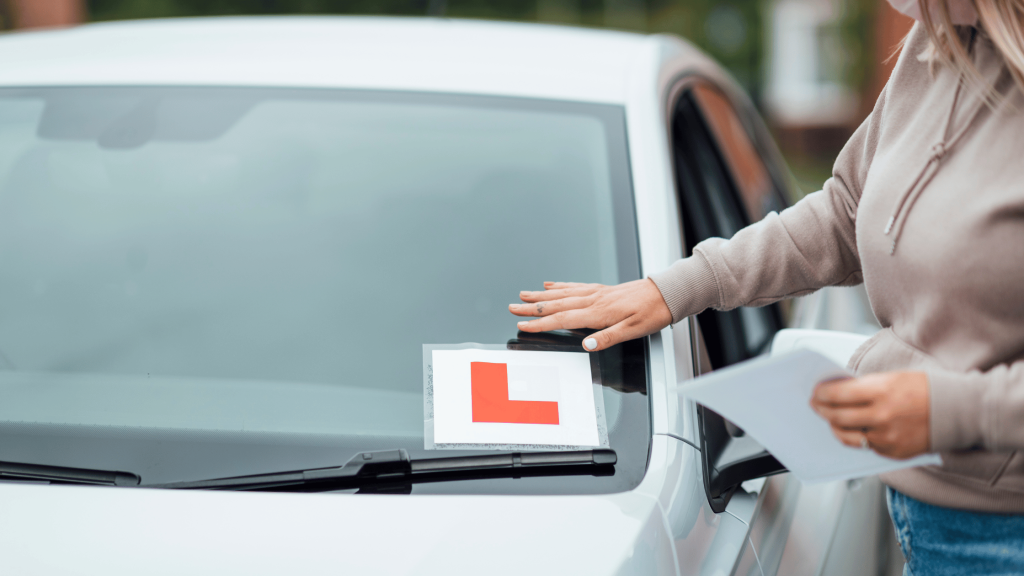For those embarking on their driving journey or recently celebrating their test success in Northern Ireland, understanding the regulations surrounding L (learner) and R (restricted) plates is paramount. These visible markers on your vehicle communicate your driving experience to other road users, encouraging patience and extra vigilance. McPartland & Sons Solicitors’ comprehensive guide helps to ensure you have all the essential information you need before you take to the roads.
L Plates: Stepping Stones to Your Full Licence
Identifying Your Vehicle: Displaying L Plates
If you’re a learner driver in Northern Ireland, displaying L plates is not optional – it’s a legal requirement every time you’re behind the wheel. These plates must be visible on both the front and the rear of the vehicle you used for practice. Many learners opt for magnetic plates for their ease of application and removal. However, it’s vital to double-check that they are securely attached to prevent any risk of them falling off while driving.
Guidance on Board: Who Can Supervise a Learner?
The law in Northern Ireland mandates that learner drivers must always be accompanied by a qualified supervising driver. This individual must be at least 21 years old and have held a full, valid driving licence for the same category of vehicle for a minimum of three years. The supervising driver’s role is crucial – they must sit in the passenger seat and be capable of providing effective guidance and, if necessary, intervening in the control of the vehicle.
Important Limitations: Restrictions for L Plate Holders
While learning to drive and displaying L plates in Northern Ireland, there are specific restrictions you must adhere to. Learner drivers are not permitted to:
- Carry any passengers in the vehicle other than the supervising driver or a registered Approved Driving Instructor (ADI).
- Drive on motorways under any circumstances.
- Tow any type of trailer.
- Drive between the hours of midnight and 5:30 am unless they are accompanied by a registered ADI.
Moving Forward: The R Plate Stage After Passing Your Test
Celebrating Success: Transitioning to R Plates
Congratulations on passing your driving test! In Northern Ireland, this achievement means you’ll now enter a one-year period where you must display R (restricted) plates on your vehicle. This period begins immediately after you receive your full driving licence.
Visibility is Key: R Plate Display Requirements
Like L plates, R plates must be displayed on both the front and the rear of your vehicle. These plates are white with a prominent, uppercase ‘R’ in Amber. Ensuring they are easily visible to other road users is essential.
Navigating at a Controlled Pace: R Plate Speed Restrictions
A significant aspect of the R plate regulations in Northern Ireland is the imposition of a reduced maximum speed limit for new drivers. If you hold a full category B (car) licence or a category A1 motorcycle licence and display R plates, your maximum speed is 45 mph (72 km/h) on all roads, regardless of the signposted speed limit. This restriction is in place for your first year of driving to encourage you to gain experience at a safer, more controlled speed. It’s important to note that this speed restriction does not apply to those holding a full category A2 motorcycle licence during their R plate period, although they are still required to display the R plates.
Key Considerations for Drivers Displaying R Plates
- Passengers: Unlike the restrictions placed on learner drivers, R plate holders in Northern Ireland can carry passengers without any legal limitations. However, particularly in the initial months of driving independently, it’s wise to only have passengers in your vehicle when you feel completely comfortable and confident.
- Motorways: Driving on motorways is permitted for R plate holders in Northern Ireland. However, given the higher speeds and increased volume of traffic typically found on motorways, it’s advisable to only consider motorway driving once you have built up sufficient driving experience and feel fully prepared for the conditions.
Conclusion: Prioritising Safety on Northern Ireland’s Roads
The L and R plate system in Northern Ireland plays a vital role in promoting road safety for all. By fully understanding and consistently adhering to the specific rules associated with these plates, both learner and new drivers contribute to a safer driving environment. These regulations are designed to support a gradual and responsible integration of new drivers into the flow of traffic.
If you have any questions or require clarification on any aspect of the L and R plate regulations in Northern Ireland, or if you have any other motoring law concerns, we encourage you to reach out to our experienced solicitors at McPartland & Sons. We are here to provide you with clear, tailored advice to ensure you understand your obligations and can navigate the roads with confidence and within the law.
Related Blogs:
Parking Ticket Laws in Northern Ireland: Know Your Rights
A Comprehensive Guide After Losing Your Driver’s License to a Driving Offence

